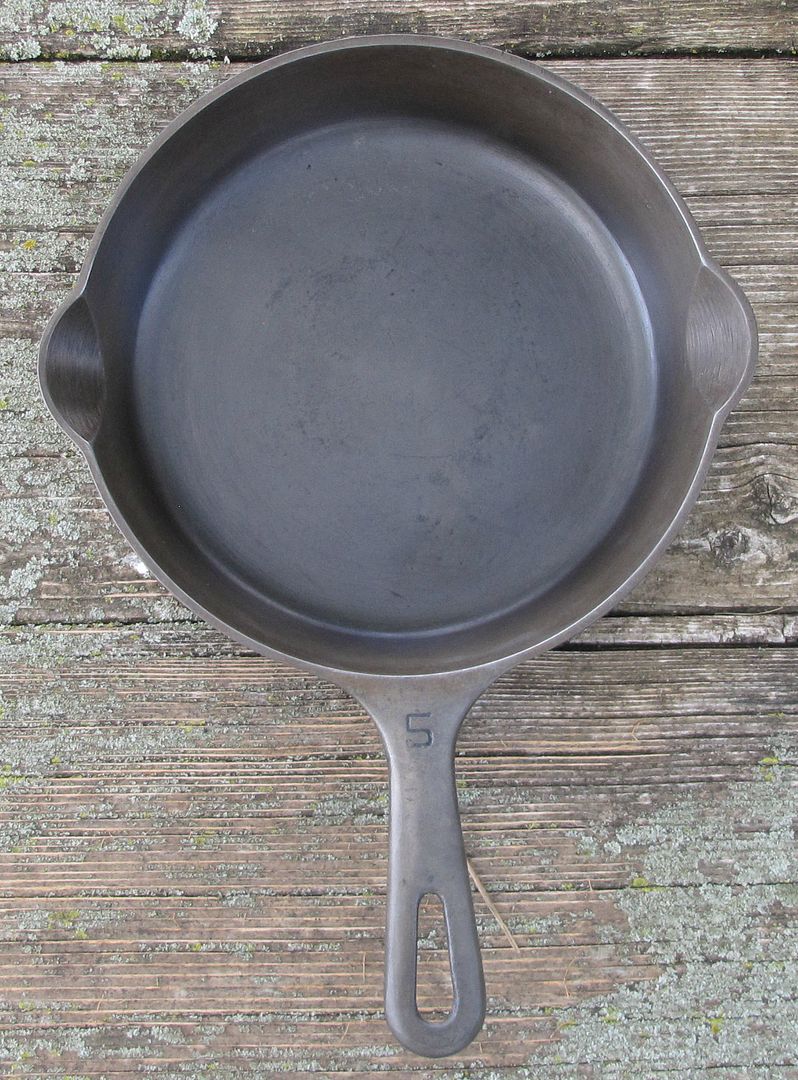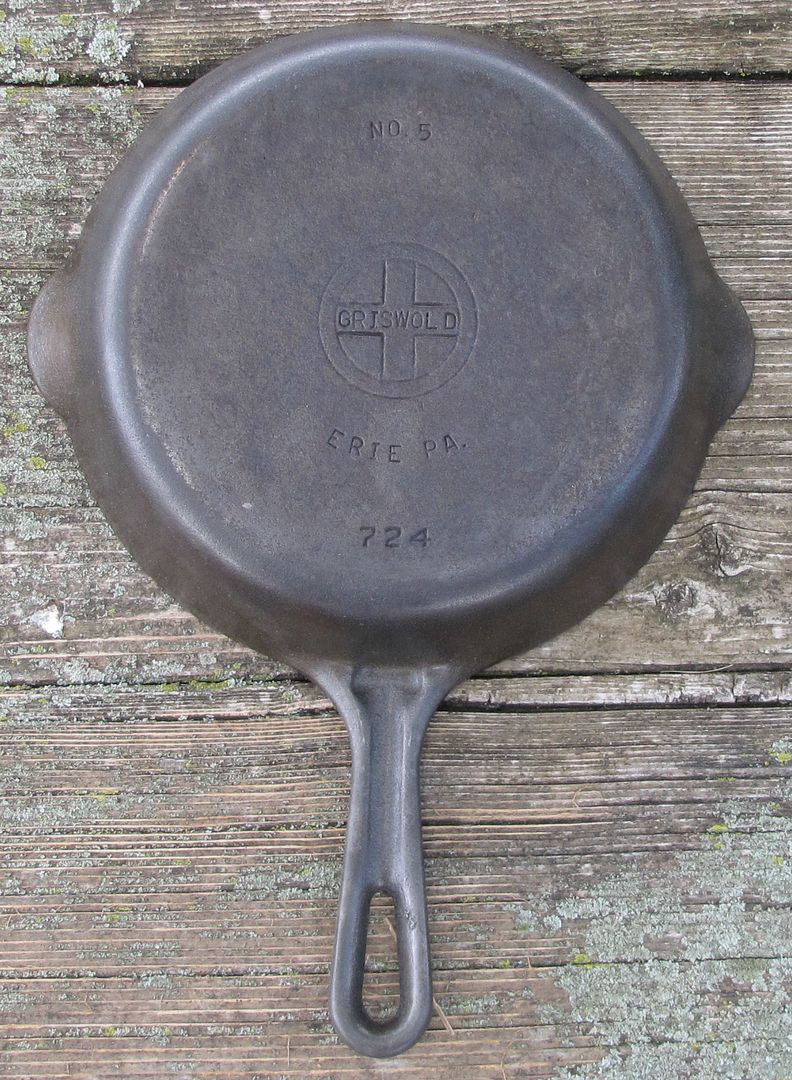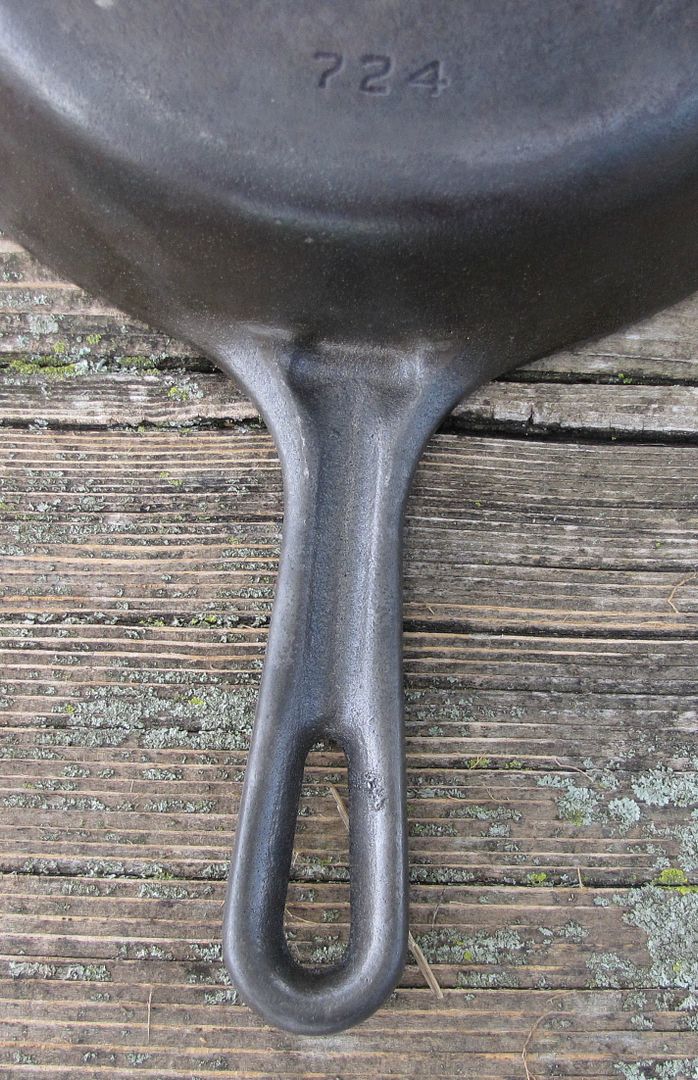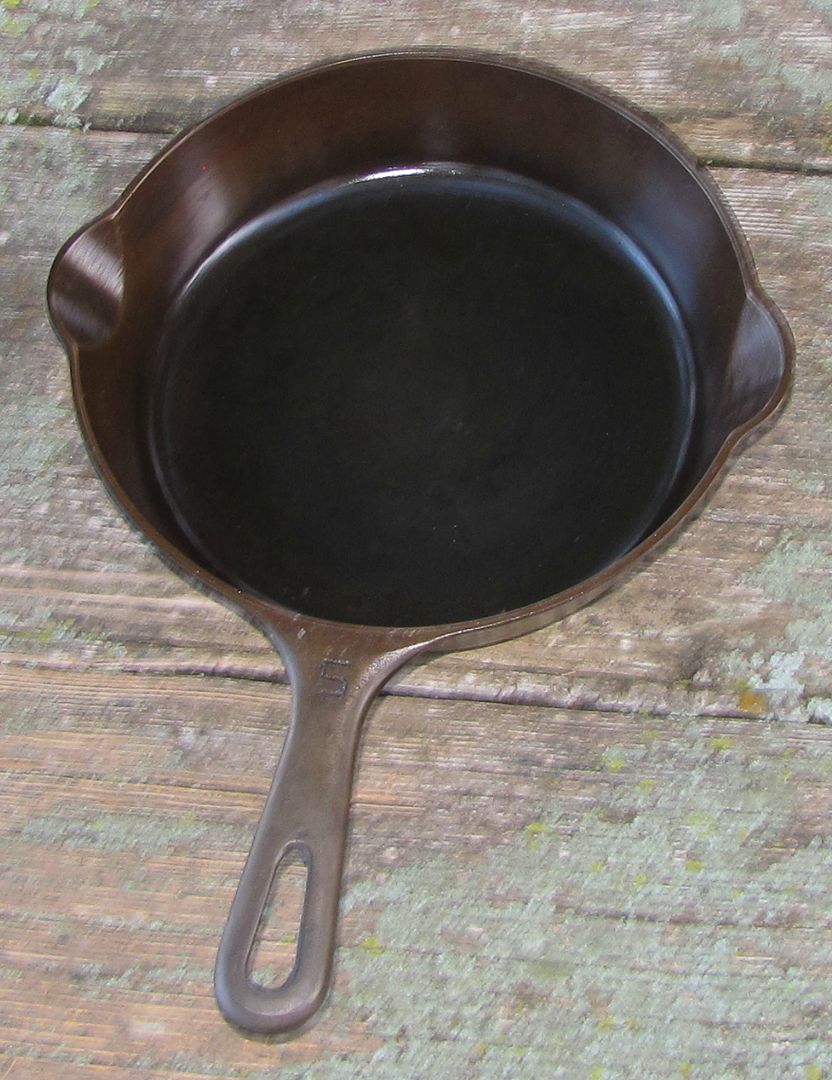Just purchased this off e-Bay to replace my new production Lodge skillet. The gritty bottom on the Lodge kept giving me a hard time. This one is so smooth, think I'm gonna like it.
Anyway I was wondering about an approximate date of manufacture on my new acquisition. I know it is a small logo Griswold & a #5. Can anyone tell me more about it, like what does the 724 mean, & about the handle? The handle is like none that I have seen before. Also, it is gray in color, will it stay that way or the more I use it will it turn black? (My Lodges were black when new.)
The seller said it has been cleaned & a light layer of oil put on it to protect it, so I'm assuming I need to season it. I'll do that this afternoon.
If the answers to my questions are posted elsewhere here in the forum please accept my apologies. First post & all, I'm not too familiar with the site layout.
Thanks for your time & help with my questions.



Anyway I was wondering about an approximate date of manufacture on my new acquisition. I know it is a small logo Griswold & a #5. Can anyone tell me more about it, like what does the 724 mean, & about the handle? The handle is like none that I have seen before. Also, it is gray in color, will it stay that way or the more I use it will it turn black? (My Lodges were black when new.)
The seller said it has been cleaned & a light layer of oil put on it to protect it, so I'm assuming I need to season it. I'll do that this afternoon.
If the answers to my questions are posted elsewhere here in the forum please accept my apologies. First post & all, I'm not too familiar with the site layout.
Thanks for your time & help with my questions.




